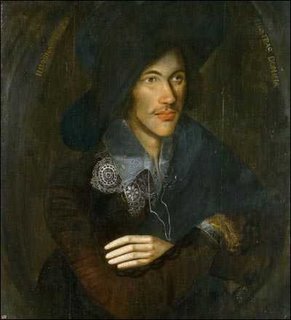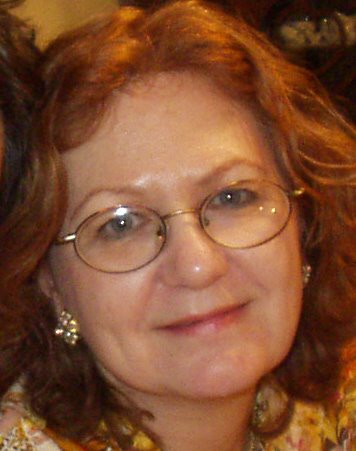John and Johnny
 Friend Christopher had an interesting blog entry yesterday about one of my very very favorite poets, John Donne. Seems England's poet laureate, Andrew Motion, has just written a review of a new critical biography about the metaphysical poet-turned-Dean of St. Paul's. In the review, he discusses this famous early portrait of Donne, formerly the property of the Marquis of Lothian, but apparently recently purchased by the National Portrait Gallery.
Friend Christopher had an interesting blog entry yesterday about one of my very very favorite poets, John Donne. Seems England's poet laureate, Andrew Motion, has just written a review of a new critical biography about the metaphysical poet-turned-Dean of St. Paul's. In the review, he discusses this famous early portrait of Donne, formerly the property of the Marquis of Lothian, but apparently recently purchased by the National Portrait Gallery.Motion goes on and on about the Latin caption on the portrait: ILLUMINA TENEBR[AS] NOSTRAS DOMINA. That's likely a takeoff on Psalms 18:28: "Domine Deus meus inluminas tenebras meas." (For those with rusty or nonexistent Latin: the artist has changed "The Lord my God will enlighten my darkness" to "O Lady, light our darkness." For picky people: this is the Latin of the Paris Psalter, but the familiar numbering of the King James edition. The Vulgate used a different numbering system.)
This portrait was commissioned around 1595, when the poet was in his early twenties and still a Roman Catholic. He composed his Songs and Sonets--love poems--probably between 1593 and 1601.
In 1601, he married and started raising a family. In 1615, he took Anglican orders. At that point, he began composing his Essays in Divinity, Sermons, and Devotions.
At the time this portrait was painted, however, he was still single, Catholic, but (in his writerly persona, at least) somewhat of a rake. Andrew Motion calls the inscription "ambiguous." Of course it is; everything with Donne has at least two meanings, if not a dozen. Nobody Catholic can use "Domina" without evoking the Virgin Mary, whether they mean to or not. Yet there is nothing religious about the foppish hat and the effeminate undone lace collar.
What has long impressed me about this portrait is not so much the inscription, but the striking resemblance of John Donne to Johnny Depp. See a hilarious Photoshopped portrait of Depp as Sébastien Bourdon model here: http://www.worth1000.com/emailthis.asp?entry=212240. It's copyrighted, so I can't reproduce it on this page. Also see http://www.cfaille.blog-city.com for Christopher's entry and a link to Motion's review.
I doubt that I'll read Stubb's book about Donne. Biographies kind of bore me. But I did hugely enjoy The Calligrapher: A Novel by Edward Docx. His glosses of Donne's poems are extremely clever, and as enlightening as anything I ever slogged through in graduate school.
Labels: poetry


2 Comments:
You write Good!
My apologies to those of your readers who might have tried to use the link you thoughtfully provided to access my own post on the new Donne bio.
Blog-city has been on the fritz for most of two days now. It's been very frustrating.
I'm working hard to get blog-city administrators to focus on the problem. I may even ring some church bells to get their attention. So send not to find for whom the bells toll.
Post a Comment
<< Home